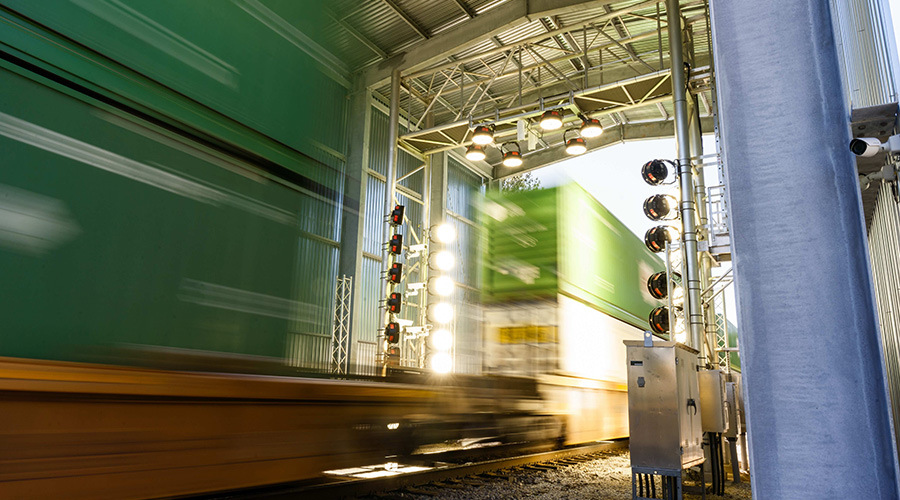California short line strives to be litmus test for hydrogen switchers
4/5/2021
By Jeff Stagl, Managing Editor
Since he became Sierra Northern Railway’s president and chief executive officer in 2014, Kennan Beard has sought to keep the 75-mile northern California short line on the cutting edge of locomotive technology. A big part of that objective is employing high-tech switchers that are more environmentally friendly and efficient.
Sierra Northern Railway became an early adopter of generator-set (GenSet) switchers, which use less fuel and produce significantly fewer emissions compared with conventional diesel switchers. The short line’s parent firm — Sierra Railroad Co. — now manages a fleet of 26 GenSets that are used by two railroads.
In March, Sierra Northern Railway took a much bolder, cutting-edge step by landing a $4 million state grant for a joint effort to design, integrate and demonstrate a hydrogen fuel-cell switching locomotive at the Port of West Sacramento.
Now in the design stage, the high-tech switcher eventually will be tested a minimum of six months to prove hydrogen fuel-cell technology can greatly improve air quality by eliminating air pollutants, such as greenhouse gas emissions, as well reduce noise and odors. Employing the locomotive means the short line can save up to 10,000 gallons of diesel usage per year.
“To reach zero emissions with a locomotive, your choice is either battery or hydrogen,” says Beard. “This hydrogen switcher design has no tender like the design being tested in Canada, it’s a single-source unit. It can operate over an eight-hour shift without any refueling.”
Sierra Northern Railway has teamed up with a number of partners to advance the hydrogen switcher project, including research, development and training organization GTI, Railpower Tech LLC, Ballard Power Systems, Optifuel Systems LLC, UC Davis Institute of Transportation Studies, Valley Vision, Velocity Strategies, Southern California Gas Co. and the Sacramento Metropolitan Air Quality Management District.
The short line is the project’s technical lead, and GTI was the formal applicant to the California Energy Commission (CEC) for the state grant. Railpower determined how much horsepower was needed and Ballard developed the fuel-cell capacity.
The grant will be used to convert a retired RP20BD 2,000-horsepower, Tier 0 diesel locomotive built by Railpower into a zero-emission RP20BH hydrogen switcher. The new locomotive will be built on the RP20BD Genset frame — keeping most of the Railpower controls — and will be repowered with 200 kW fuel cells, hydrogen storage of 222 kilograms and a 500-kilowatt-per-hour battery storage system.
Ultimately, the partners plan to design a safe and reliable hydrogen fuel-cell switcher, operate and study it in a real-world environment, and collect data to provide insights on performance, operations and costs, says Beard, adding that the locomotive will cost considerably more than the $4 million grant.
“We will keep an eye on if the switcher can operate six to eight hours with enough fuel, the refueling time and the cost versus diesel,” he says. “We want to prove if hydrogen provides more power per dollar.”
Railroads and ports are challenging applications for low-carbon energy because they often require near-continuous operation and high power levels, according to GTI. The project aims to address those issues so ports can become high-throughput clusters for hydrogen.
The partners also seek to expand the use of hydrogen locomotives in the rail industry — especially among short lines — and at state ports. The potential California market alone for the locomotives is projected at more than 260 switchers and up to 500 intrastate locomotives.
 Velocity Strategies
Velocity Strategies“This isn’t just for us, it’s for the short line industry in California,” says Beard, who has served as president of the California Short Line Railroad Association since 2006. “We will share results with the rest of the short-line industry in the state. We want to take it to other locations to demonstrate.”
Many people believe hydrogen is highly explosive and dangerous — a perception Sierra Northern Railway will try to overcome while demonstrating the locomotive in the Sacramento area.
“The problem with hydrogen is people first think about the Hindenburg, and I get that reaction,” says Beard. “But there’s a Toyota Mirai and trucks on the road that use hydrogen.”
Sierra Northern Railway, Ballard, Railpower, the Sacramento Metropolitan Air Quality Management District and others first tried to secure a state grant for a hydrogen locomotive about four years ago.
“Hydrogen innovation was so new at the time, that application didn’t go anywhere. It was ahead of its time,” says Jaime Lemus, the district’s transportation and climate change division manager. “We went from big excitement to a big letdown. But since then, we have pushed for hydrogen in the region.”
A funding opportunity arose again in early 2020, when the CEC put out a call for grant applications.
“The change this time is the fueling infrastructure,” says Lemus.
The district is providing $500,000 for the project and will remain involved in the demonstration.
“We want to be a partner in this, to have a voice in the design and to collaborate with the partners,” says Lemus. “We see this as going step to step: to a short line, then to other short lines then to line haul. We want it to be modeled and tried at other rail yards.”

